
D&D historian extraordinaire. Friend of humanity, animal, and werewolf alike. Buy my griddle-hot D&D history here! https://t.co/SOechFJn9d
How to get URL link on X (Twitter) App


 The events of the last seven weeks have proven me terribly wrong.
The events of the last seven weeks have proven me terribly wrong.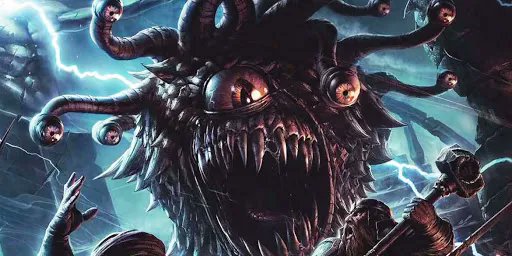
 Since then, huge numbers of new players have found the hobby thanks to Stranger Things and actual plays like Critical Role. These new fans discovered a vibrant and thrumming TTRPG industry.
Since then, huge numbers of new players have found the hobby thanks to Stranger Things and actual plays like Critical Role. These new fans discovered a vibrant and thrumming TTRPG industry.

 I would posit it was impossible to run AD&D without the Dungeon Master’s Guide. Sales of the DMG can show us the maximum number of POTENTIAL DUNGEON MASTERS.
I would posit it was impossible to run AD&D without the Dungeon Master’s Guide. Sales of the DMG can show us the maximum number of POTENTIAL DUNGEON MASTERS. 
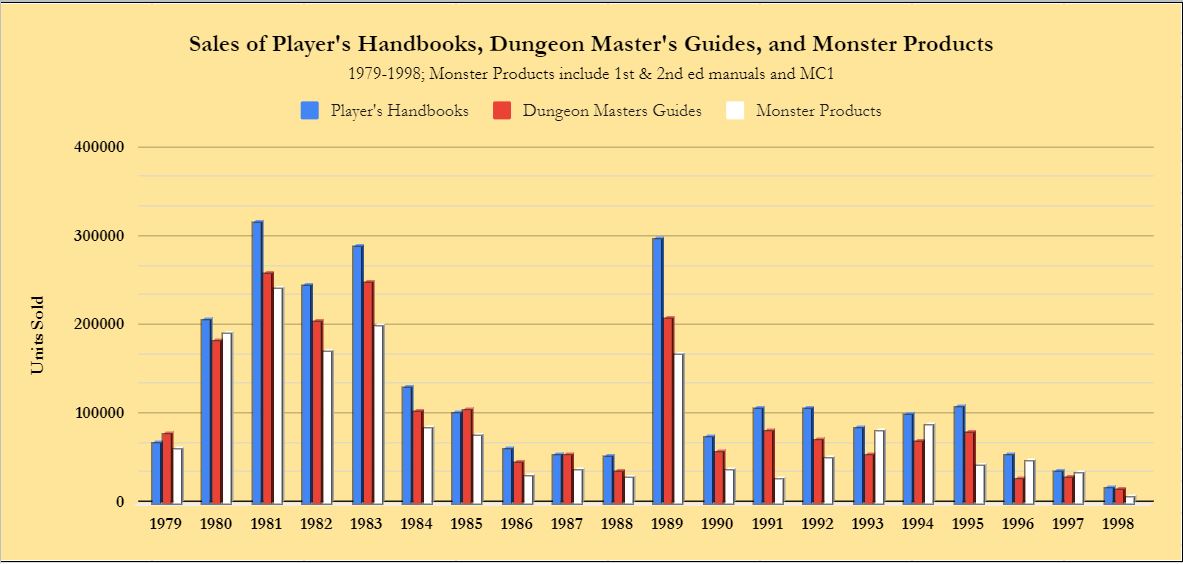
 For 13 of the 20 charted years, PHBs outsold DMGs which outsold monster products. That pattern suggests to me the following: the vast majority of DMs bought all three releases. However, if we assume four to six players per DM, that means MOST AD&D PLAYERS DID NOT BUY THE PHB.
For 13 of the 20 charted years, PHBs outsold DMGs which outsold monster products. That pattern suggests to me the following: the vast majority of DMs bought all three releases. However, if we assume four to six players per DM, that means MOST AD&D PLAYERS DID NOT BUY THE PHB.
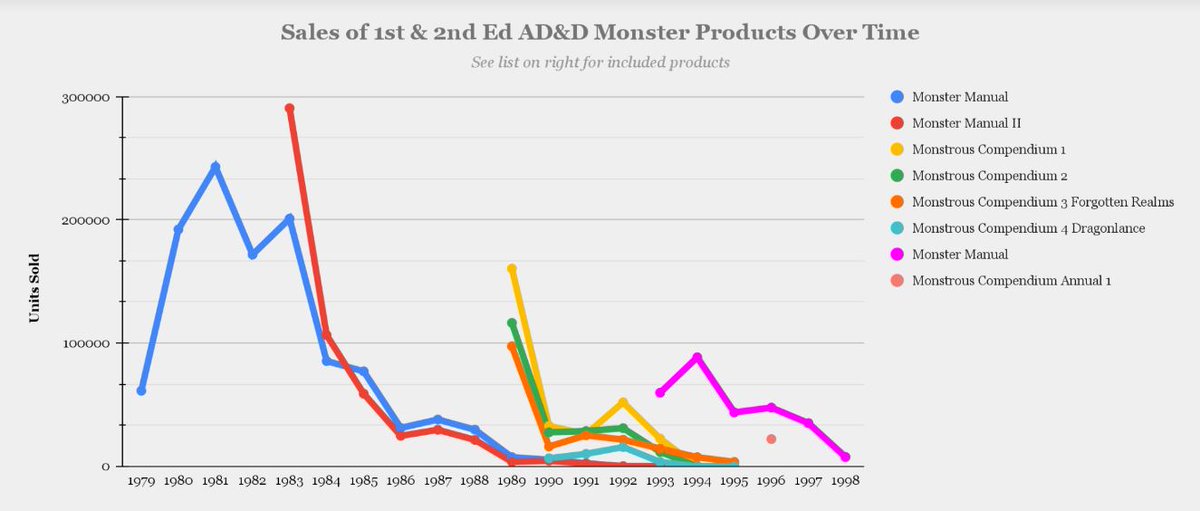
 In 2nd edition, TSR replaced hardcover books of monsters with loose leaf papers and three ring binders and called it the Monstrous Compendium. The idea was that players could add to the binder as new monsters came out, but the design of the sheets never made this convenient.
In 2nd edition, TSR replaced hardcover books of monsters with loose leaf papers and three ring binders and called it the Monstrous Compendium. The idea was that players could add to the binder as new monsters came out, but the design of the sheets never made this convenient. 
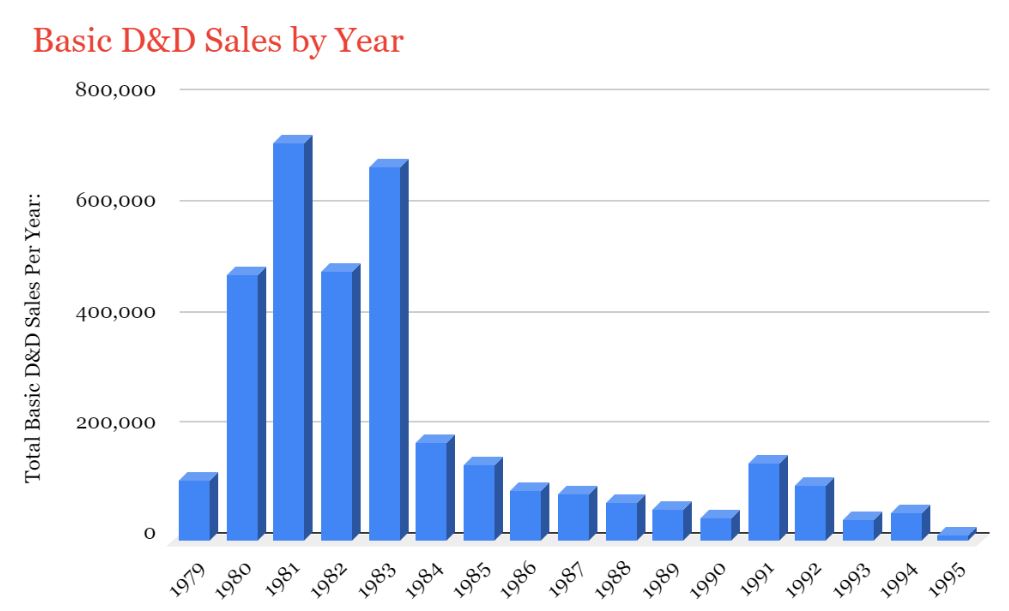

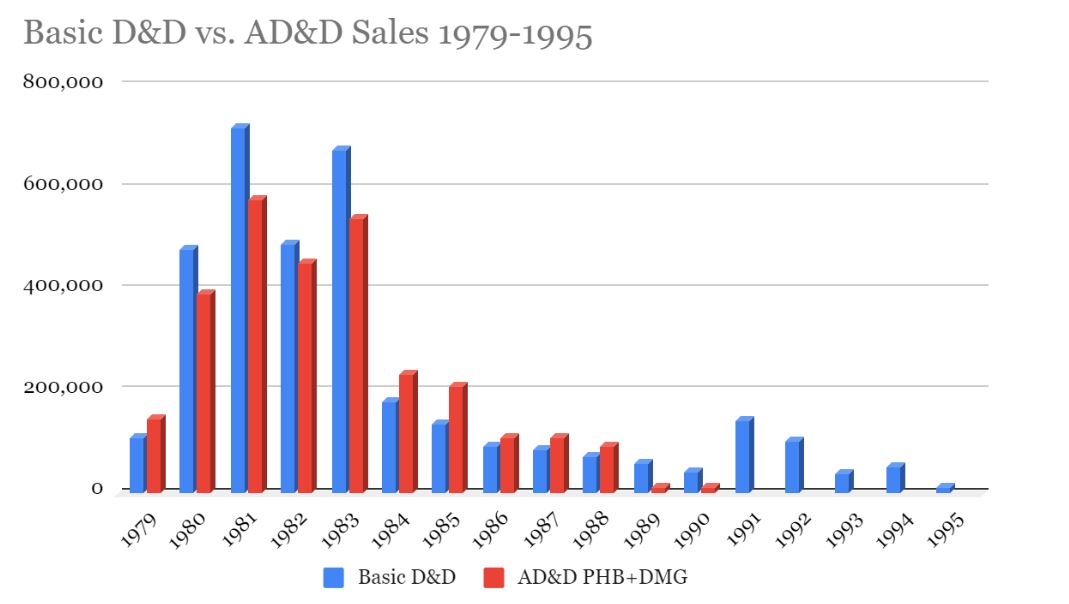
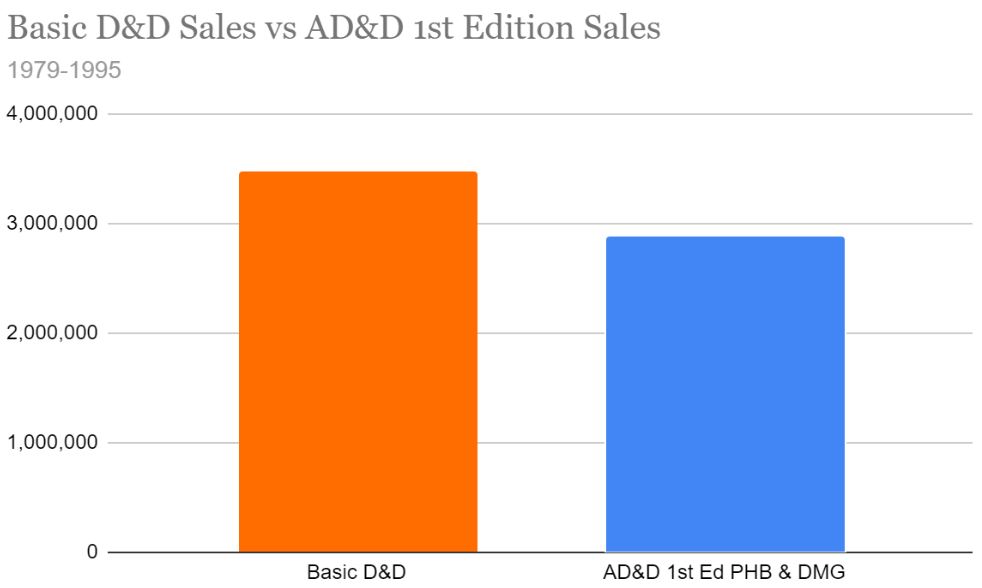 For those who don’t know, early in its life, the tree of D&D was split in half. On the one side there was D&D, an RPG designed to bring beginners into the game. It was simpler, and didn’t try to have rules for everything.
For those who don’t know, early in its life, the tree of D&D was split in half. On the one side there was D&D, an RPG designed to bring beginners into the game. It was simpler, and didn’t try to have rules for everything. 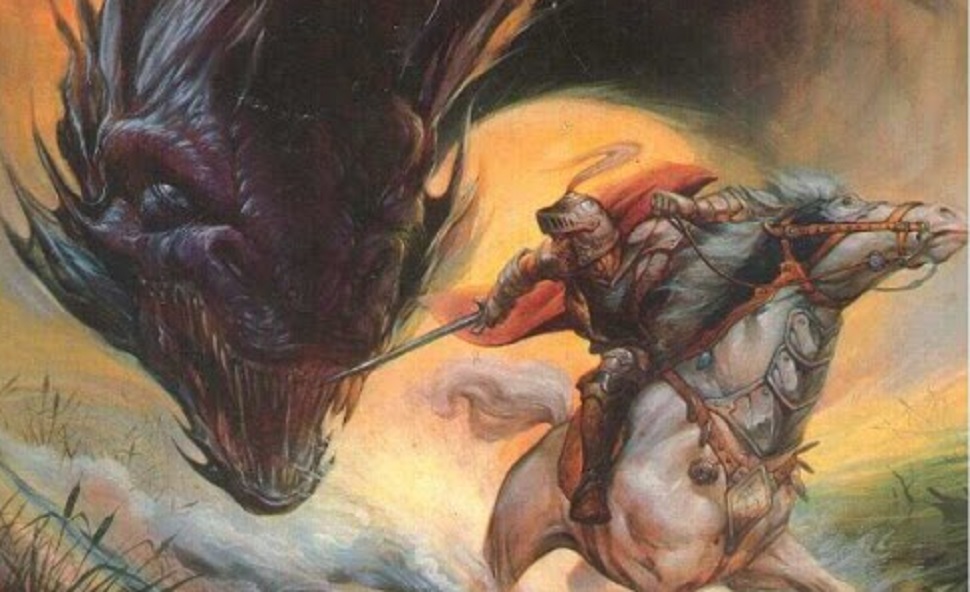
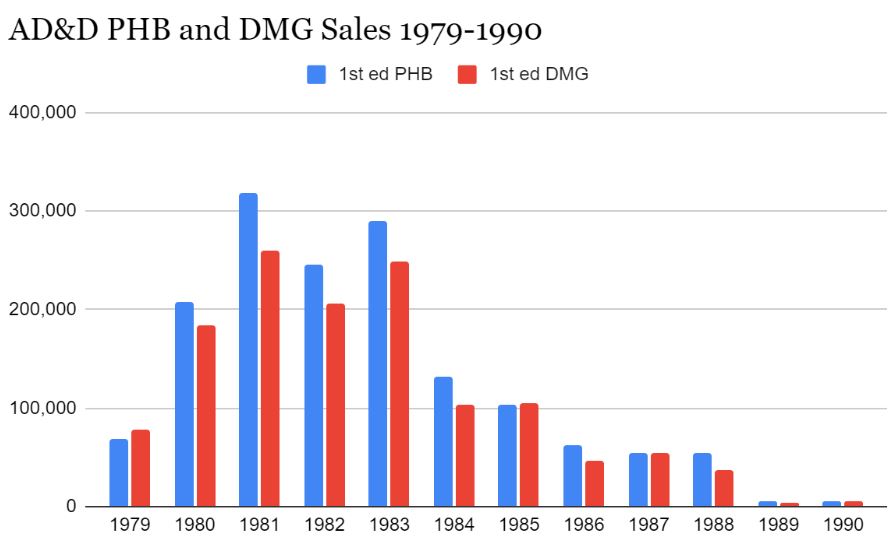
 I'm going to start making charts, and simply posting them. If people want the raw data, I can post that too, but obviously, charts are prettier. I'm starting with AD&D 1st ed Players Handbook and Dungeon Masters Guide.
I'm going to start making charts, and simply posting them. If people want the raw data, I can post that too, but obviously, charts are prettier. I'm starting with AD&D 1st ed Players Handbook and Dungeon Masters Guide.